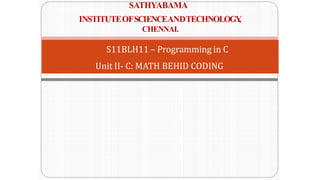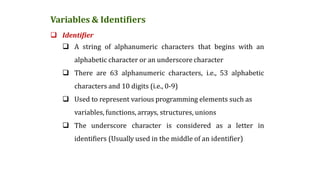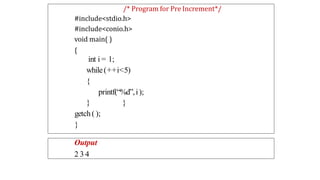The document discusses the structure and fundamentals of C programming. It describes the typical sections of a C program including documentation, preprocessor directives, global declarations, the main function, and local declarations. It also covers input/output functions like scanf and printf, and data types in C like constants, variables, keywords, and identifiers. Finally, it discusses variable scope and the differences between local and global variables.























































































































